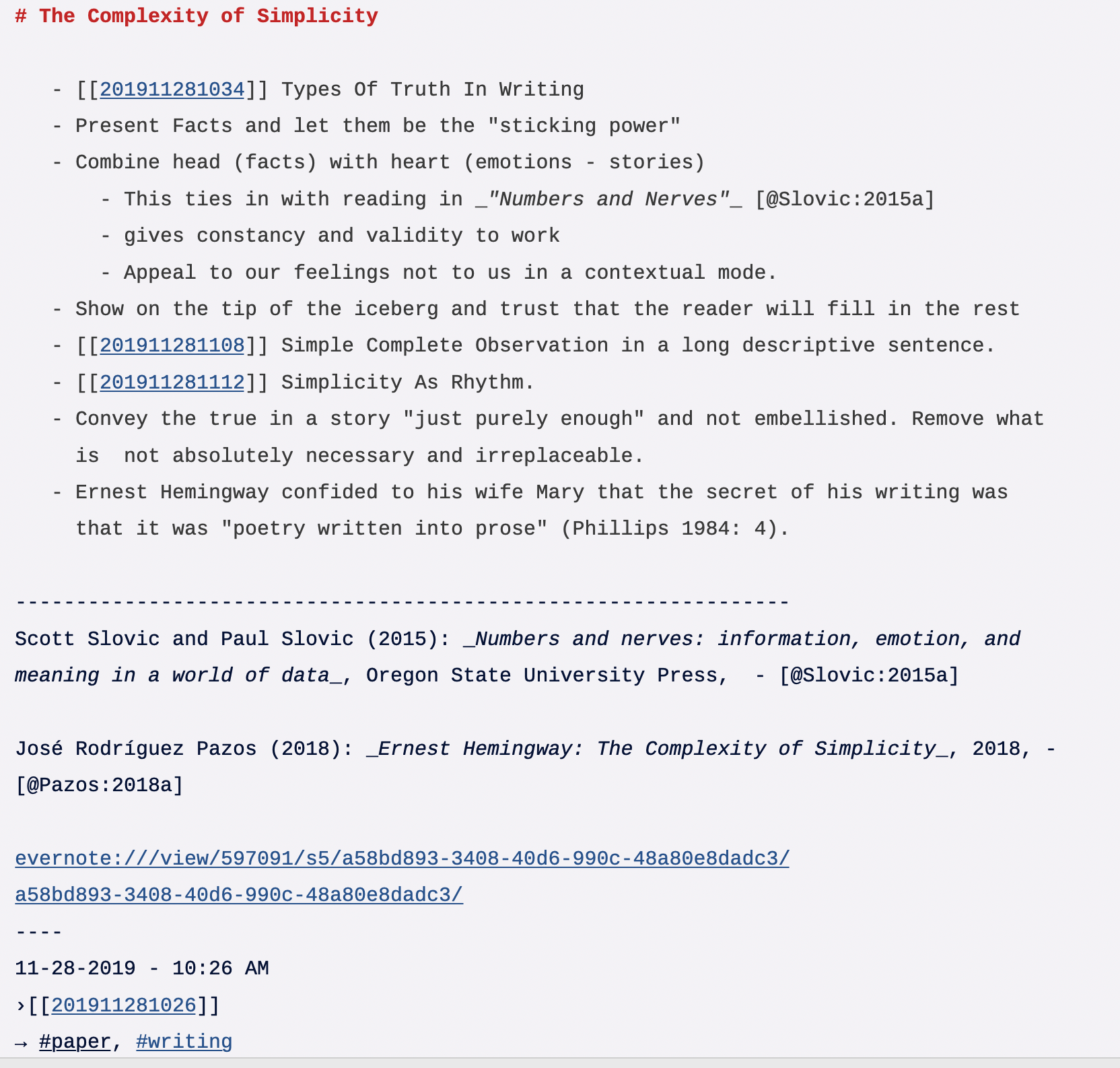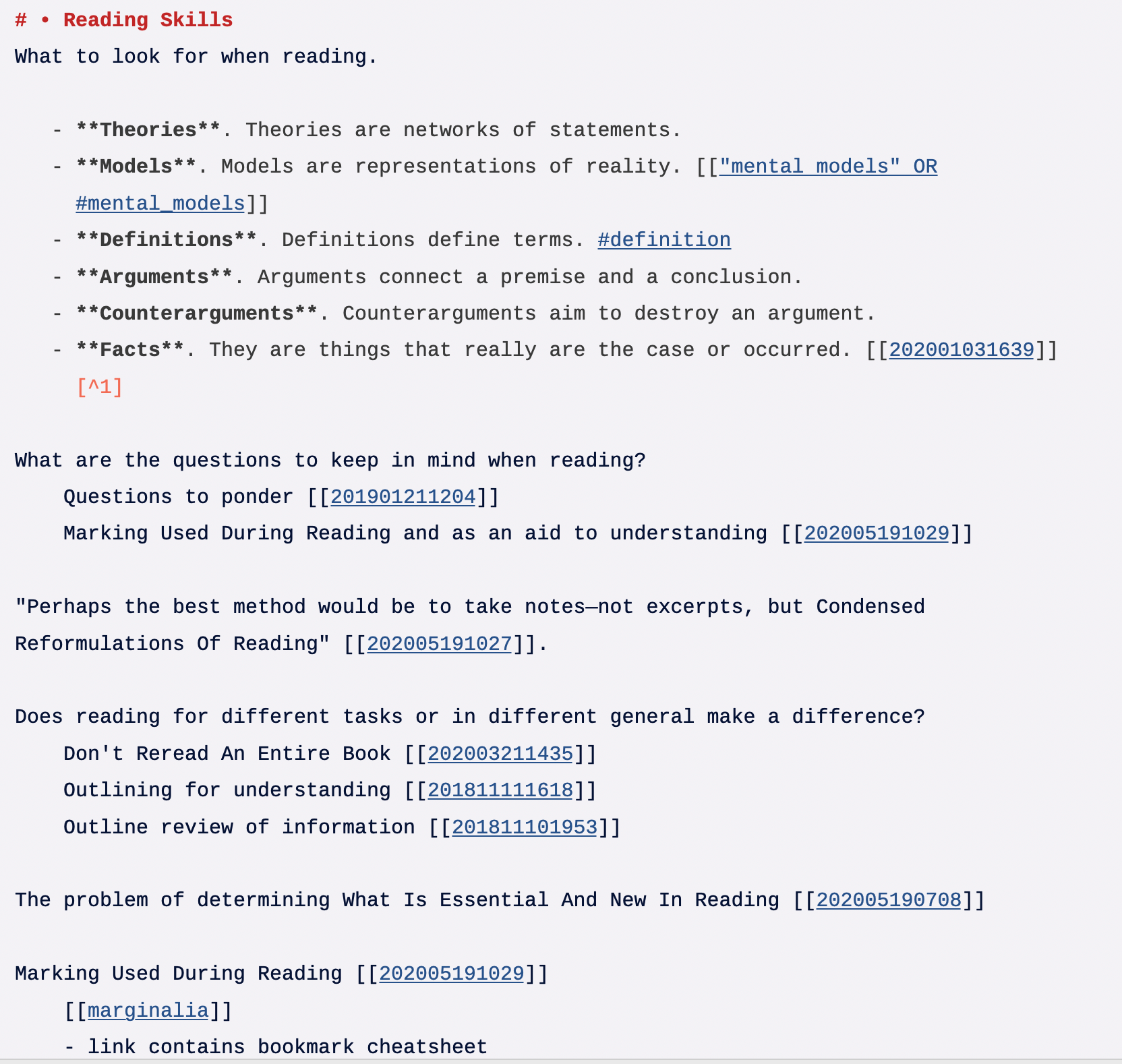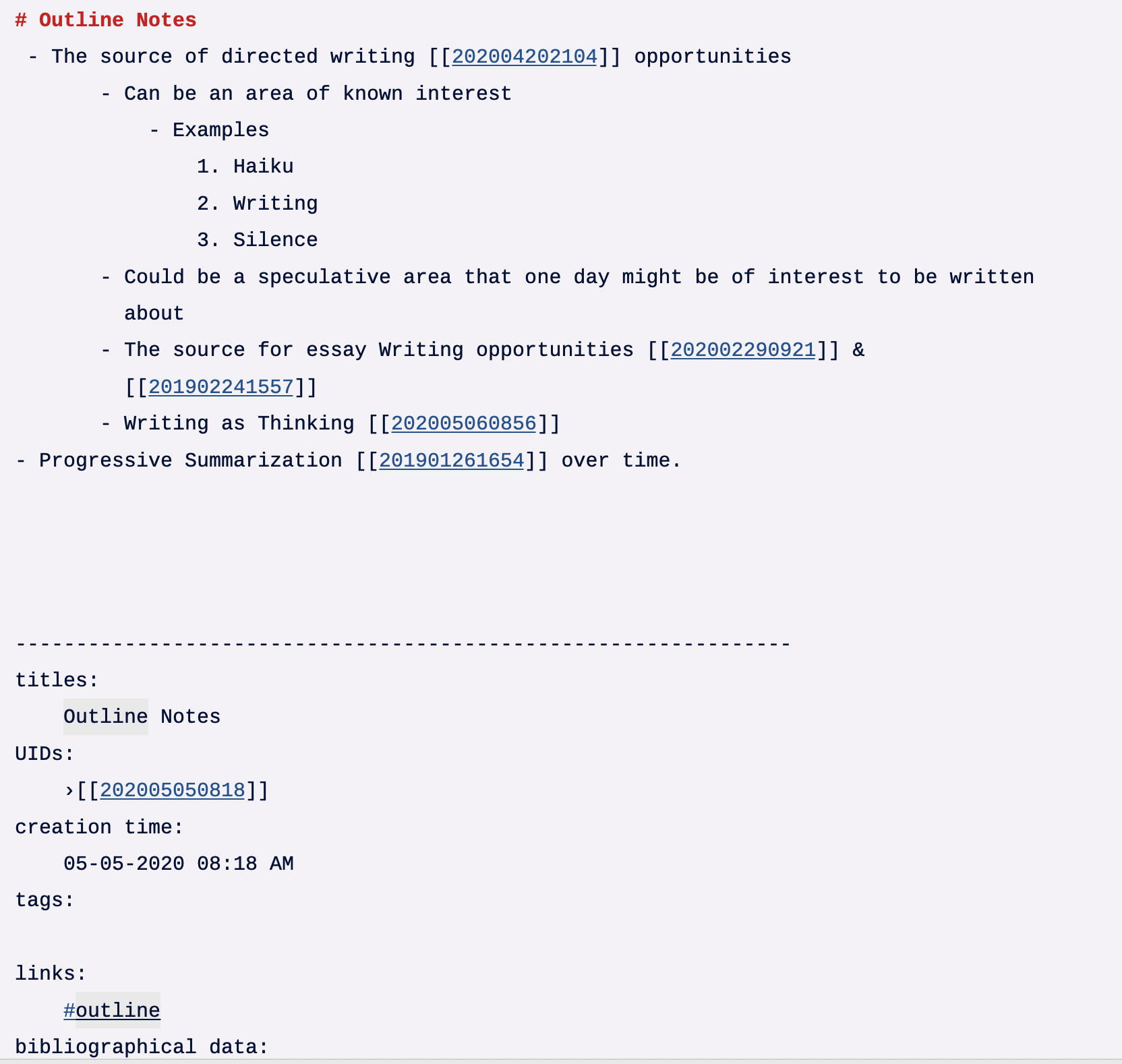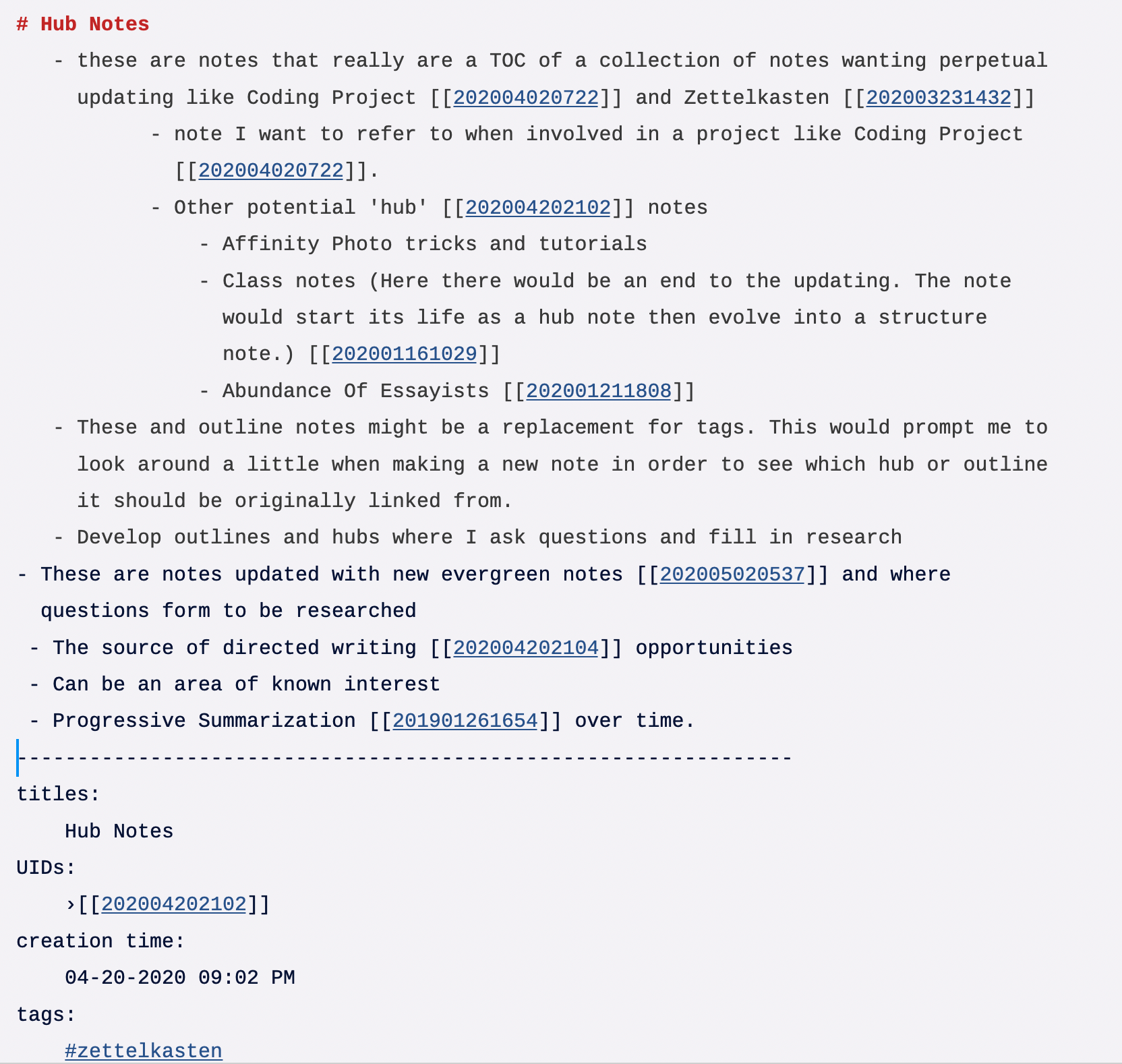Non-Academic Workflow
The Problem
I see the value of a Zettelkasten for academic pursuits, and I have begun to implement one for such.
At the same time, I have a number of non-academic notes that I could see fitting into a Zettelkasten, but I'm not sure how. I can't tell if that's because they don't belong in a Zettelkasten or because I haven't thought through or seen a good example of what that would look like. Here are two examples, I'd love your input!
Example 1: Interesting info found on the web
I ran across this link about the 40 Best Google Fonts. From what I've read, the value of what I put into a Zettelkasten is what I can put in my own words. I haven't the foggiest what that would look like for this article. Do I look through this post now and decide what I like from it? Do I create a note about potential font choices and suggest that this might be a helpful resource? Or does this simply not belong in a Zettlekasten that I intend to have ... thirty years from now? I'm leaning towards that later, but then what do I do with this bit of information?
Example 2: Someday/Maybe Ideas
I'm a pastor and have long managed a someday/maybe list of things I'd like to do in the future. These range from ideas related to rebuilding our website to leading a Bible study on a particular topic. Since I have not committed to these ideas, the "bottom up" up approach of organization found in a Zettlekasten seems like the appropriate approach to managing them.
For the past several years and before I even knew about Zettlekasten, I've managed them in my notes app, one note per idea. I can see the value that networking these ideas together might have, but once again, I can't tell if this is a brilliant non-academic application of the Zettlekasten or if they don't belong because they are potential, future actions instead of knowledge.
Summing it up
I realize that a Zettlekasten is ultimately what an individual makes of it. What works for one person might not work for another, but I would love your input in thinking through this. Thanks so much!
Howdy, Stranger!
Comments
@millerstevew, welcome.
I'd approach a someday maybe "thing" by taking individual items on your list and creating a 'speculative hub note' or a structure note Give it a unique tag. Then you'd have someplace to hang relevant notes. I personally wouldn't sit down and transfer everything on my someday maybe list into my Zettelkasten. I'd leave the list where it is now and as I was tickled by a relevant idea for an item on the list, then I would create a structure note for it.
The idea being that over time details are filled in and eventually what was initially speculative becomes firmly grasped. Easy Peasy presto this becomes TodayDone.
For example, if I was leading a Bible study on Usury. This would only be a start:
Will Simpson
My peak cognition is behind me. One day soon, I will read my last book, write my last note, eat my last meal, and kiss my sweetie for the last time.
My Internet Home — My Now Page
Ask yourself what areas of your life are you actively developing either through experience or collecting of knowledge?
I tend to have quite a number of those kind of links as well. I try to organize them by topic, for instance 'YAML' or 'Knowledge management tools' in a single Zettel about this topic. This Zettel does not only hold links, but are a starting point for other Zettels as well. So I have follow-up Zettels in which I explore different lines of thought.
I incorporate these in Zettels and mark them with #todo so I can filter them out quickly. Take for instance a Zettel about 'Fiction writing methods'. In this Zettel I can add a comment that says 'Investigate the Snowflake Method by Randy Ingermanson'. I start this comment with a "## To do" header.
Happy Zettling. If it works for you, it's OK.
Cheers from a rookie,
Edward
Yes, this is what I've come to call a "hub" note. Some call it an ##outline note. There is longer discussion on this topic as it relates to coding but the principles apply to anything mostly. A note listing a collection of atomic fragments of knowledge around a topic you are actively working with. Be it 'YAML' or 'Knowledge management tools' or 'web coding' or 'knitting'. I think the key is that these are actively being worked with and not just collected for the sake of collecting.
Here is a list of my current hubs. I do move some structure notes in and out of the hub group as my interests and responsibilities drift about.
Will Simpson
My peak cognition is behind me. One day soon, I will read my last book, write my last note, eat my last meal, and kiss my sweetie for the last time.
My Internet Home — My Now Page
Thanks @Will for the input. Can you clarify the difference between "outline note", "structure note", and "hub note"? I see this language used a lot, and I can't tell if they are synonyms or referring to slightly different things. These are super helpful examples!
Hi @millerstevew, I've learned a lot in the past couple of days about the possibilities of atomic notes for non academic use by browsing people's 'digital gardens' - which isn't exactly Zettelkasten but isn't too far off. There's a list here that you might find interesting. I'm some way from finding what works for me and my intent is to back through this forum in more detail, but I did find seeing the network of other people's notes quite enlightening.
I'm not sure I can but I'll try. The caveat is that this is my own imperfect understanding. I'm still a beginner. It feels like I'm showing my brain when share my notes. I realize people don't care about the same things I do and some may even think my notes are silly but oh well. As I put myself out there I gain a better understanding. With that in mind, here goes.
Some might consider these semantical differences but maybe there are some subtle differences.
Thinking at a very high level, there are three types of note in my zettelkasten. One, I have notes that I try and express a single atomic notion or idea. This is the vast majority of my notes. This is where knowledge is synthesized. Second, are structure/outline/hub/literature notes that gather the atomic notes together and form a kind of Annotated Table of Contents/Indexes and entry point for deep exploration. Lastly is the third type of note in my zettelkasten, "the oddball note that doesn't fit into category one or two." This third type of note is getting rarer and rarer.
I look at the structure as a verb not a noun. I try and add some semblance of structure in every note. By structure here I mean things like grouping like ideas, adding tags appropriately, being sure note isn't orphaned, adding more of my own verbiage to a link as to why I linked to it, and in what context I linked to it. I think part of adding structure as being a grouping of relevant links with some notation of what is behind the link.
The difference in my mind is muddled. All these notes look the same but literature notes are the result of processing ideas from a book or paper. I call notes hub notes if they are the entry points for active projects. An outline note might be considered a hybrid. All of these I call "structure notes".
Examples
A literature note - José Rodríguez Pazos (2018): Ernest Hemingway: The Complexity of Simplicity, 2018 (This is the whole note.)

A hub note (This is the first ⅓ of the note.)

An outline note of my notes on what an outline note is. (This is the whole note.)

Here is my note on hub notes. (This is the whole note.)

Will Simpson
My peak cognition is behind me. One day soon, I will read my last book, write my last note, eat my last meal, and kiss my sweetie for the last time.
My Internet Home — My Now Page
I happen to have a note or two about fonts as well for web projects. Here's an annotated example of my favorites:
Also a note about fonts that I forget about from time to time but which are the basis of a lot of modernist type faces:
Same for Didot, Baskerville, and a couple of others. I also add screenshots of combinations I like, like Oswald + Baskerville:
The Zettel on Oswald contains a reference to my note on Futura, too:
So there's ways to make font list "your own"
Author at Zettelkasten.de • https://christiantietze.de/